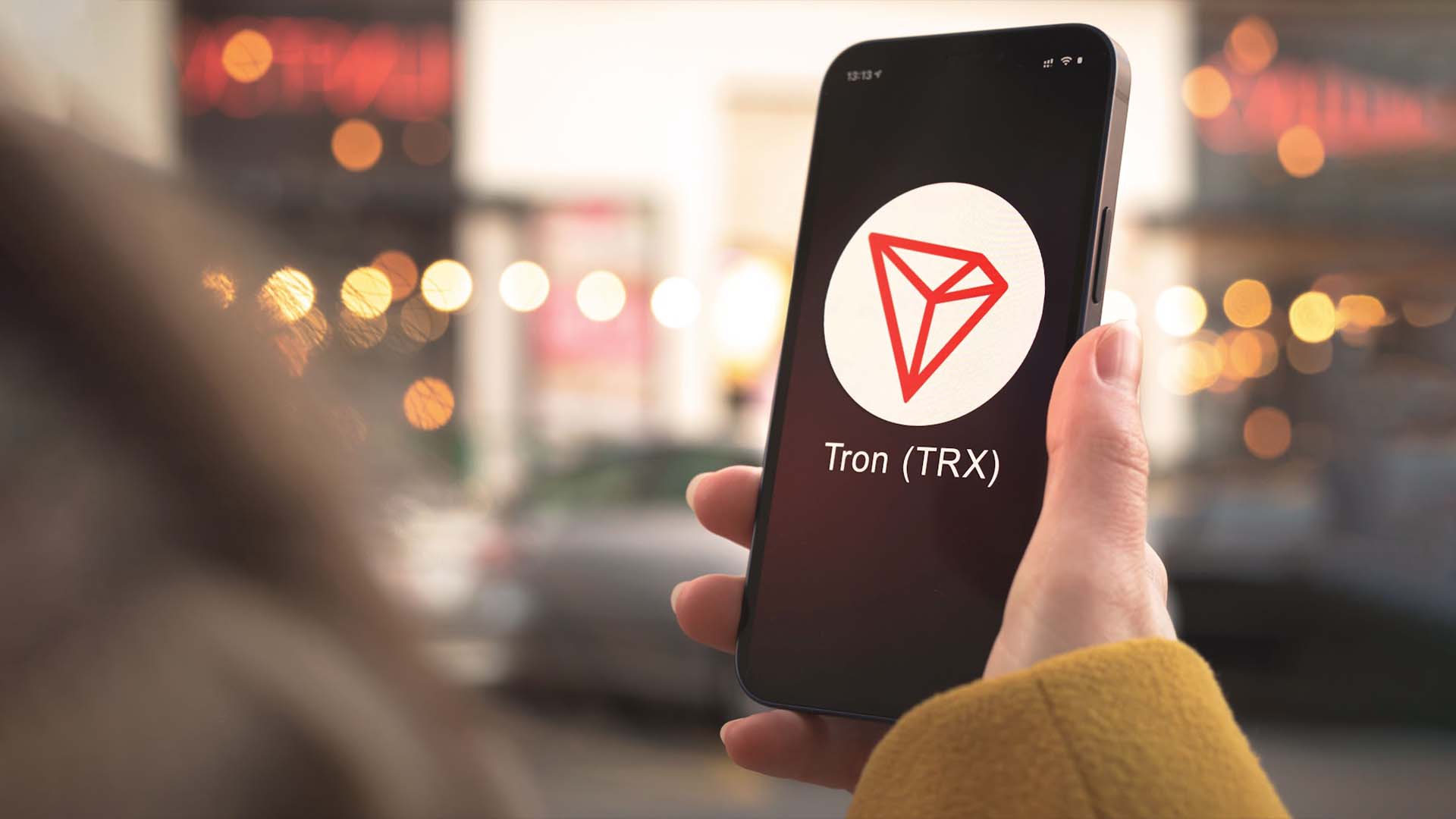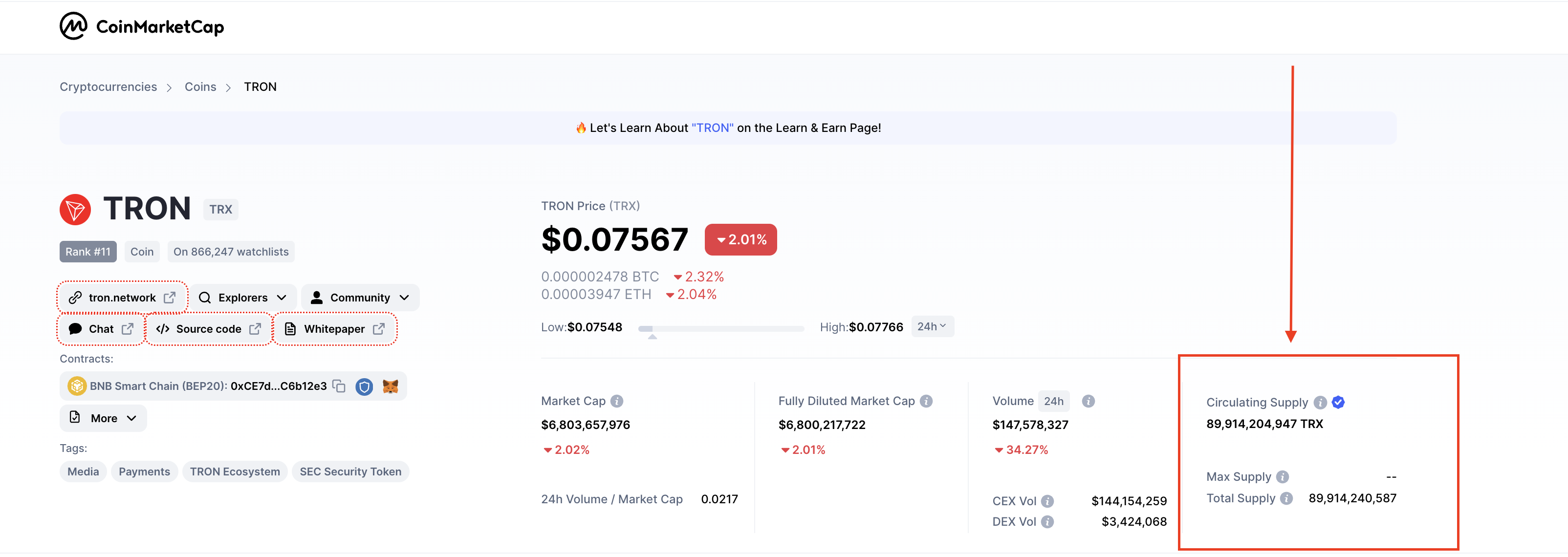TRON 101 – Everything You Need To Know About TRON
Reading Time: 6 minutes

A decentralized ecosystem to facilitate a global entertainment network? Yes, you heard that right. And that’s the concept behind Tron, a crypto network to empower artists and content creators without relying on traditional intermediaries. Sounds crazy? Not so much.
In this article, you’ll discover all you need to know about Tron, its network, its native coin (TRX), and much more. Let’s get into it!
First Of All, What Is It About Tron?
Tron’s origin story began in September 2017, during the establishment of the Tron Foundation in Singapore. A Chinese entrepreneur, Justin Sun, had just gained authority as the founder and CEO of Peiwo — a popular Chinese social media app.
Inspired by his interest in blockchain and entrepreneurial experience, Sun thought to create a decentralized platform for content sharing and entertainment.
Sun had noticed loopholes in the entertainment industry, and his main goal with Tron was to eliminate intermediaries and allow direct interaction between content creators and consumers.
By doing this, content creators would have a decentralized network to create, publish, distribute, and monetize their content without depending on centralized intermediaries like apps, music labels, or streaming platforms.
TRX, which stands for Tron, is a digital currency that belongs to the Tron network and operates on the Tron blockchain. It serves as a medium of exchange within the Tron ecosystem and enables transactions among the ecosystem users.
Using Tron: How Does TRON Work?
Tron has its unique systems and processes that govern its use. Let’s look at some of these systems to better understand how Tron works.
1. Tron’s Blockchain Network
Blockchain is an open-source and decentralized digital ledger that enables a secure and transparent record of all crypto transactions.
A blockchain often consists of blocks with different sets of verified transactions. Once a block is added to the blockchain, it cannot be removed, edited, or tampered with.
Tron has its own blockchain network, designed specifically to cater to the needs of the Tron ecosystem — focused on decentralized entertainment and content sharing.
2. Consensus Mechanism
A consensus mechanism is a ‘verifying’ component of a blockchain network that enables users in an ecosystem to confirm the authenticity and validity of transactions. This mechanism allows multiple parties to verify transactions in a ‘trustless’ environment.
Tron’s blockchain network uses a delegated proof-of-stake (DPoS) consensus mechanism, which means that the coin holders use a voting system to choose representatives that validate transactions and create new blocks.
These ‘representatives’ are often known as delegates. Tron’s consensus mechanism is key to maintaining the ecosystem’s security and it is a crucial part of decentralization.
3. Smart Contracts
A smart contract is a program or activity that runs on pre-defined rules and conditions. Smart contracts convert agreement terms into computer codes that automatically execute—once the agreement terms are met.
For example: if X happens, then Y follows. If X doesn’t happen, then J follows.
The Tron network enables the creation and execution of smart contracts, which enables developers to build decentralized applications (DApps) and protocols on the Tron ecosystem.
The Tron Virtual Machine (TVM) is responsible for executing these smart contracts.
4. Tron Mining
Technically, Tron coins cannot be mined.
That is, a new Tron cannot be created. The total supply of Tron coins was determined during the Initial Coin Offering in 2017.

Only cryptocurrencies that use the Proof-of-Work consensus can be mined. In a PoW consensus blockchain system, miners compete to validate transactions. And whoever validates transactions first gets the mining reward.
Tron uses a proof-of-stake consensus mechanism — which has no mining involved. However, while Tron cannot be mined, there are other ways to acquire it. This includes buying TRON from a cryptocurrency exchange directly or participating in token swaps or airdrops.
5. Tron Explorer
Block explorers are your gateway to everything about the data on a crypto’s blockchain — both past and present.
The main Tron’s explorer is Tronscan, which provides real-time data and information on all transactions, blocks, fees, and other blockchain activity. Tronscan offers a user-friendly interface that allows users to access various data on the Tron network.
Other data accessible with Tron Explorers include:
- Hash rates
- Tron addresses
- Number of transactions
- Transaction timestamps
- Gas fees consumed per transaction
- The total value of Tron in an account
Investing in Tron: Exploring Tron as an Investment Opportunity
Thinking of investing some funds into the Tron network? Here’s what you need to know.
What Are The Benefits Of Investing In Tron?
Using and investing in Tron (TRX) has several benefits. Some of them include:
- Tron Is a Decentralized Entertainment Platform
Tron is a breath of fresh air. Its main aim is to revamp the entertainment industry by offering content creators and consumers a decentralized platform. This signifies a major opportunity for investors, as Tron could completely revolutionize the entertainment industry.
- Tron Has a Unique Ecosystem
The Tron network has a diverse ecosystem of decentralized applications like social media, finance, gaming, and many more. This ecosystem offers users a plethora of options and opportunities with the network. This is also lucrative to investors and developers alike.
- Tron Has Strategic Partnerships
Tron has strategic partnerships and collaborations with prominent companies and projects in the blockchain and entertainment space. These partnerships enhance the visibility and adoption of the Tron ecosystem, paving the way for increased usage and value for TRX tokens.
What Are The Risks Associated With Investing In Tron?
- Liquidity Risks
While TRX coins are traded on different cryptocurrency exchanges, liquidity volume can differ significantly.
For example, low liquidity would make buying or selling TRX coins at desired prices challenging, thereby increasing the risk of market manipulation. Additionally, unregulated exchanges can expose users to fraud and other security breaches.
- Tron Has Limited Global Acceptance
While Tron has gained widespread adoption in the crypto ecosystem, it is yet to be adopted in mainstream industries — compared to other cryptocurrencies like Bitcoin or Ethereum. This limited universal acceptance may reduce the coin’s usability across the globe.
- Regulatory Uncertainty
Generally, the crypto ecosystem faces a lot of regulatory uncertainty, and Tron isn’t exempted. This can threaten Tron investments, as some regulations can make the crypto market go haywire and leave investors in the red.
Buying Tron: How Can You Buy Tron Safely?

- Evaluate Your Risk Appetite: The first step is to weigh your risk appetite. How large or small are you willing to go? A rule of thumb in investment is that you should only invest an amount you’re willing to lose or an amount your life doesn’t depend on. After confirming the quantity of Tron (TRX) you’re willing to buy, move on to the next stage— choosing a verified crypto exchange.
- Choose A Verified Crypto Exchange Platform: A crypto exchange platform allows you to buy and sell any cryptocurrency. Global crypto exchange platforms include Binance, Coinbase, Kraken, BitFinex, etc. Some crypto exchange platforms also offer wallets to help you store your Tron.
- Fund Your Account On The Crypto Exchange Platform: Just like depositing money into your bank account to buy goods and services, you’ll also need to fund your crypto exchange account to buy Tron. After doing this, proceed to buy.
- Purchase Tron: To buy Tron, navigate to your crypto exchange platform’s “buy” or “market” section, enter the Tron symbol, and input the quantity you wish to buy.
- Once your buy order is confirmed, the Tron will be deposited into the platform’s Tron wallet. You can leave it on the platform or transfer it to a more secure wallet.
Selling Tron: How Can You Sell Tron Safely?
You can sell your Tron in exchange for fiat or as a payment method for goods and services. You can sell Tron through p2p (peer-to-peer), i.e., within users in the platform, or sell to the crypto exchange itself. If you’re selling your Tron for fiat, follow these steps:
P.S: If you have Tron outside the crypto exchange platform, you must first transfer the Tron to the platform. But if the Tron is already on the platform, skip this step.
- Choose A Verified Crypto Exchange: Like the first step in buying, you must choose a preferred cryptocurrency exchange to sell your Tron. Coinosh is a highly recommended TRON exchange in Nigeria where you can sell Tron for Naira instantly.
- Connect Your Fiat Bank Account: For some crypto exchanges, you’ll need to link your local currency bank account to the platform. And for other p2p platforms, you can send your bank account number to the buyer. On Coinosh, you only need to input your bank account details.
- Exchange Your Tron for Your Preferred Currency: Now it’s time to sell. If selling directly to the crypto exchange, navigate to the “market” or “sell section” to sell Tron for your preferred currency. If selling via p2p, navigate to the p2p section.
- Withdraw the Fiat Into Your Bank Account: Once you exchange the Tron for your preferred currency, the fiat will be deposited into either your fiat wallet or the given account details. If deposited in a fiat wallet, you can withdraw the fiat into your preferred bank account.
Conclusion: Tron and the Future
Tron has captured the attention of users and investors alike — by offering a decentralized platform for entertainment and content sharing. This is a one-of-a-kind concept with huge potential. However, Tron’s success relies on its ability to navigate global regulations, address technological challenges, and remain relevant in a competitive crypto ecosystem.
As the platform gains more traction and increased usability, TRX coins will have more demand and perceived value. Tron holds limitless potential for the future, so if you’re looking to invest, the coin is worth keeping tabs on.
I believe I’ve been able to provide you with some understanding of Tron. If you enjoyed reading that, you might consider reading some of my other interesting articles on other cryptocurrencies. Adios!